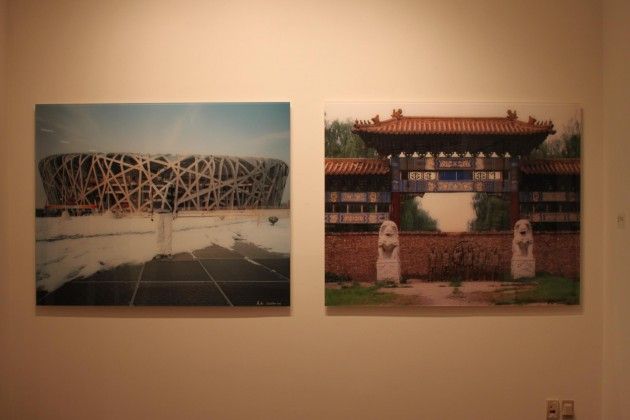The “Hidden Meaning” Exhibit
The Longyear Museum of Anthropology in Alumni Hall is hosting a new exhibit from November 12 to March 8, 2013 titled “Hidden Meaning: Contemporary Chinese Art by Liu Bolin.” The wonderful display holds 13 of artist Liu Bolin’s large photographs depicting scenes of individuals blending into varying backgrounds in contemporary China.
Born in 1973 in Shandong Province, Bolin received his BFA from the Shandong College of Arts in 1995 and his MFA from the Central Academy of Fine Arts in 2001. While he lives and works in Beijing, his artwork has been exhibited in museums internationally; some include Beijing, Verona, Milan, Venezuela, Sweden and New York City. The ideas and themes in his artwork revolve around the Chinese social problems of the 1990’s.
In this exhibit, Liu Bolin – who is referred to as “The Invisible Man” – showcases many pieces from his series of works called “Hiding in the City,” where his fully-clothed body is painted so that it blends in with elaborate backgrounds of different cities and places in China. Bolin hides his body in his photographs like a chameleon, in order to show how individuals see things differently based on the environment, and how the Chinese government controls the urban settings.
“I used to think I was meaningless, and this work is my way to express myself and find meaning,” Bolin said, describing the camouflaging of his body in his artwork.
The Longyear Museum contains 13 different pieces from Liu Bolin’s “Hiding in the City” series, each one quite large and elaborate. The photographs show a painted Bolin, sometimes with other individuals as well, blending into different backgrounds in the city. In “Hiding in the City No. 86 – Bird’s Nest,” he depicts himself in front of a shape made of trusses and Chinese ceramics. The 2009 photograph portrays Bolin standing in front of the Beijing National Stadium. Nicknamed the “Bird’s Nest,” this stadium has become a landmark of national pride after it was built for the 2008 Summer Olympics in Beijing.
In the last two pieces, Bolin is painted in front of the Nine Dragon Wall in Beihai Park in Beijing. Rather than being in front of different cityscapes, therefore, Bolin is depicted in front of two brilliant blue backgrounds, one with a rich purple dragon in the center and the other with dark orange dragon. These pieces, called “Hiding in the City – Dragon Series #1 and #2,” were photographed in 2010. Instead of hiding somewhere throughout the photograph, Bolin blends in directly in the middle of the canvas so that he and the dragons are essentially right on top of each other.
One of the most exciting parts of this exhibit was trying to find where the individuals in the photographs were hidden. While it is quite obvious where many of the figures are located, sometimes they blend in with the background a little too well. In the 2008 photograph “Hiding in the City No. 71 – Bulldozer,” finding Bolin seemed almost like a “Where’s Waldo”contest with many minutes of intense searching and a shout of triumph when he is finally spotted, his body almost entirely hidden by the enormous bulldozer.
Whether or not you are particularly interested in anthropology or artwork, you should definitely check out Bolin’s fantastic exhibit. The museum only takes five or ten minutes to explore and it is an experience you won’t soon forget.
Contact Jaime Gelman at [email protected].







